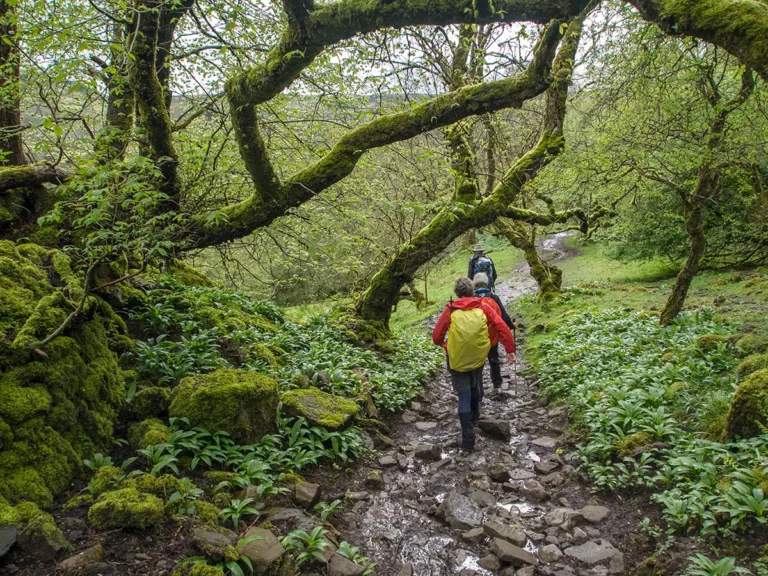Consider climbing up the sheer face of a mountain. It’s dangerous, exhausting, and often impossible. But, when you stretch the distance horizontally and zig-zag up the side, ascending small amounts with each switch back and forth, it’s suddenly achievable.
A switchback in hiking is a trail that ascends the vertical face of a mountain by crisscrossing horizontally in a series of sharp turns, dividing the steep climb into gradual, more manageable distances.
It sounds easy when explained in one sentence, but, like many hikers, I loathe switchbacks. Hiking switchbacks can be mentally and physically demanding.
This article helps you prepare for a switchback trail while providing more information on their use, plus a list of popular trails with switchbacks.
Understanding switchback trails
Switchbacks are used extensively for transportation, with roads, hiking trails, and even railway lines zig-zagging to traverse mountains. Although the history of switchbacks isn’t well documented, the Inca Road System was a complicated 25,000-mile path that implemented switchbacks in the fifteenth century.
The Stelvio Pass in Europe and Pikes Peak in Colorado are two famous modern-day switchback roads. The Stelvio Pass was built in 1820 and features 48 switchbacks climbing 6,000 feet over 15 miles. It’s often included in the Tour De France route.
Pikes Peak is a 13.5-mile drive up 7,400 feet with 156 switchbacks.
When are switchback trails used for hiking?
Switchback trails are typically needed for elevation grades of over 20%. However, many switchbacks are at a 10% to 20% grade, helping you climb an impossibly steep 45%+ mountain face.
Because of the physical demand of hiking uphill, switchbacks are often featured on challenging trails with large elevation gains. A 10% grade doubles the calorie burn of a 150-pound person walking a mile on flat ground.

Tips for hiking switchback trails
Possibly the most revered switchback hiking is on Mount Whitney, the highest peak in the lower 48. A section of 97 switchbacks — called 99 switchbacks — winds 2.2 miles and climbs 1,738 feet at an average grade of 15%.
Switchbacks turn short, nearly impossible steep vertical climbs into much longer, still demanding, winding elevational hikes. They make reaching a summit possible but don’t make it easy.
And covering a lot of ground while traveling a short distance up, can mentally break you. Here’s how to make it through the challenge and monotony of switchback trails:
1. Listen to music
The greatest challenge to switchbacks is mental. When you’re exhausted, look down, and notice you’ve walked a long way to only travel a short distance up, it crushes your motivation to continue. Furthermore, looking up a mountain at how many switchbacks remain will do the same.
It’s best to get lost in music to help you lose focus on the distance.
2. Conserve your energy before the switchback
Getting excited early on a hike is common, leading you to push your pace too fast, leading to exhaustion. Research your trail and understand the distancing.
Hiking switchbacks will demand your spare energy, so keep gas in the tank.
3. Take small wins
Do you have 12 steep switchbacks to conquer? Break it into 3 parts with a trail mix break. Each switch is a win. Celebrate it.
The small motivations drive you to keep going, and the tasty snack helps replenish your electrolytes.
4. Never short-cut the switchback trail
A lot goes into the engineering of switchback trails. The structural geometry of switchbacks considers the width of turns and depth of the trail to ensure structural integrity.
When short-cutting, you not only destroy vegetation but risk the integrity of the trail itself.
5. Use trekking poles
Trekking poles are extremely helpful when hiking up and down steep hills. With extra stability, your posture improves, benefiting your breathing and oxygen intake and increasing endurance.
Coming down a switchback trail is especially tough on the knees. Making trekking poles essential for anyone with knee issues.
6. Condition your legs and cardio
If the monotony of switchbacks doesn’t get you, the cardio may. Condition your body to be trail ready with hill runs or stair climbs.
Cardio strength is essential for steep elevation changes, and a long switchback is gutting.



Popular switchback trails
- Angel’s Landing, Zion National Park, Utah
- 4.4-mil out-and-back trail. 1,604 ft elevation gain.
- Half Dome, Yosemite National Park, California
- 15-mile out-and-back trail. 5,193 ft elevation gain.
- Mount Whitney Trail, California
- 20.9-mile out-and-back trail. 6,646 ft elevation gain.
- Navajo Loop Trail, Bryce Canyon, Utah
- 1.5-mile loop trail. 515 ft elevation gain.
- Shafer Trail, Canyonlands National Park, Utah
- 19.6-mile point-to-point trail. 3,106 ft elevation gain.
- Charleston Peak South Trail, Mount Charleston, NV
- 18.8-mile out-and-back trail. 5,055 ft elevation gain.
Final thoughts
Aside from the physical uphill challenge and monotony of crisscrossing up a near-vertical mountainside, a switchback trail rarely leads to bad views.
So if you plan to face some switchbacks hiking your next trail, the adventure should far outweigh the grind. To have a safe hike and power through each hair point turn, remember to:
- Pack extra water
- Bring electrolyte-replenishing snacks like beef jerky and trail mix
- Conserve your energy going into the switchbacks
- Consider trekking poles
- Bring headphones and prepare your motivational music (cue the Rocky soundtrack)
- Start training today
- Never short-cut the trail
Despite my disdain for switchbacks, they are an incredible feature of hiking. Looking down from the top of a narrow switchback to see a serpent trail dotted with the top of hikers’ heads is a sight to see.
Be safe, and have an incredible hike.
Are you planning a hike with a switchback trail? Share this story with friends and let us know which one.








